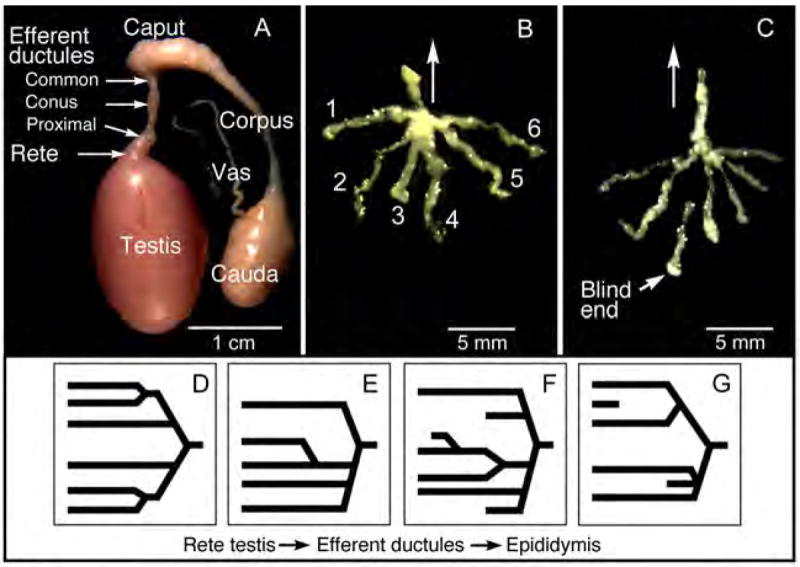Figure 1.

A) Gross morphology of the male hamster reproductive tract after dissection to remove surrounding connective tissues and fat. The rete testis exits under the capsule at the apex or cephalic pole of the testis, connecting to thin, delicate efferent ductules. Efferent ductules connect to the expanded caput epididymidis that connects to a very thin corpus and then a very large cauda epididymidis. A thin vas deferens extends from the cauda. B) Microdissection revealed six individual efferent ductules that merge into a common duct that flows toward the epididymis (arrow). The number of ductules ranged from 3 to 10 ducts per testis. C) In this sample, microdissection revealed a blind ending efferent ductule in the region nearest the rete testis. Arrow indicates direction of epididymis. (D-G) These drawings represent 4 different patterns observed of efferent ductules merging into a common duct.
